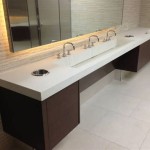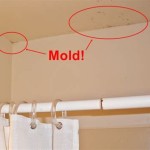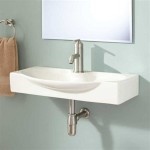Oval Bathroom Sink Basin: A Comprehensive Guide
The oval bathroom sink basin stands as a popular choice for both residential and commercial bathroom designs. Its soft, rounded edges provide a visual appeal that complements various interior styles, from traditional to contemporary. Beyond aesthetics, the oval shape offers practical benefits in terms of space utilization and ease of cleaning. This article provides an in-depth exploration of oval bathroom sink basins, covering their design considerations, material options, installation methods, and factors to consider when selecting the right basin for a specific bathroom.
The term "oval bathroom sink basin" encompasses a wide range of designs, all characterized by their elongated, curved shape. The precise dimensions and curvature can vary significantly, impacting the overall look and functionality of the sink. Understanding these nuances is crucial for making an informed purchase decision.
Design Considerations for Oval Bathroom Sink Basins
The design of an oval bathroom sink basin directly influences both its aesthetic appeal and its functional utility. Several design elements must be carefully considered to ensure the chosen basin aligns with the overall bathroom design and meets the user's needs.
One pivotal design element is the size of the basin. Oval basins are available in a variety of sizes to accommodate different bathroom spaces and user preferences. Smaller oval basins are ideal for compact bathrooms or powder rooms where space is limited. Larger basins provide more ample washing space and are better suited for larger bathrooms or master suites. The depth of the basin is another critical factor. Deeper basins minimize splashing and offer greater capacity for filling with water. However, excessively deep basins may be uncomfortable for some users, particularly children.
The style of the basin also plays a significant role in the overall design. Oval basins can be undermount, drop-in (also known as self-rimming), vessel, or wall-mounted. Undermount basins are installed beneath the countertop, creating a seamless and modern look. Drop-in basins are installed from above, with a visible rim resting on the countertop. Vessel basins sit on top of the countertop, acting as a focal point in the bathroom. Wall-mounted basins are attached directly to the wall, freeing up floor space and creating a minimalist aesthetic. Each style offers distinct advantages and disadvantages in terms of installation complexity, cost, and maintenance.
The presence or absence of faucet holes is another important design consideration. Some oval basins are pre-drilled with one or more faucet holes, while others are designed to be paired with wall-mounted faucets or faucets installed on the countertop. The choice depends on the desired aesthetic and the existing plumbing setup.
Overflow drains are common features in many oval bathroom sink basins. These drains prevent the sink from overflowing if the drain is accidentally blocked or the faucet is left running. While not essential, overflow drains provide an added layer of protection and peace of mind.
The edge profile of the basin can also contribute to its overall design. Some oval basins feature a sharp, angular edge, while others have a softer, rounded edge. The choice depends on the desired aesthetic and the overall style of the bathroom.
Material Options for Oval Bathroom Sink Basins
The material used to construct an oval bathroom sink basin significantly impacts its durability, appearance, and maintenance requirements. A wide range of materials are available, each with its unique set of properties.
Vitreous china is one of the most common materials used for bathroom sink basins. It is a ceramic material that has been coated with enamel and fired at high temperatures, resulting in a smooth, durable, and non-porous surface. Vitreous china is resistant to staining, scratching, and chipping, making it a practical choice for high-use bathrooms. It is also relatively inexpensive compared to other materials.
Porcelain is another popular choice for bathroom sink basins. It is similar to vitreous china but is generally more durable and resistant to wear and tear. Porcelain is also available in a wider range of colors and finishes.
Fireclay is a type of ceramic that is fired at extremely high temperatures, resulting in a very dense and durable material. Fireclay basins are resistant to cracking, chipping, and staining, making them ideal for high-traffic bathrooms. They are often heavier and more expensive than vitreous china or porcelain basins.
Cast iron is a durable and long-lasting material that is often used for bathroom sink basins. Cast iron basins are typically coated with enamel to provide a smooth and non-porous surface. They are resistant to scratching and chipping but can be heavy and expensive.
Stainless steel is a modern and sleek material that is becoming increasingly popular for bathroom sink basins. Stainless steel basins are resistant to rust, corrosion, and staining. They are also relatively lightweight and easy to clean. However, they can be prone to scratching and may show water spots more readily than other materials.
Glass is a visually striking material that can add a touch of elegance to any bathroom. Glass basins are available in a variety of colors and textures. They are resistant to staining and scratching but can be more fragile than other materials.
Stone is a natural and luxurious material that can add a touch of sophistication to any bathroom. Stone basins are available in a variety of materials, including marble, granite, and travertine. They are durable and resistant to staining but can be porous and require sealing to prevent water damage.
Solid surface materials, such as Corian and Swanstone, are man-made materials that offer a seamless and non-porous surface. Solid surface basins are resistant to staining and scratching and can be easily repaired if damaged. They are available in a wide range of colors and patterns.
Installation Methods for Oval Bathroom Sink Basins
The installation method for an oval bathroom sink basin depends on the style of the basin and the existing plumbing setup. Proper installation is crucial to ensure the basin functions correctly and prevents leaks.
Undermount basins are installed beneath the countertop. The countertop is cut to fit the shape of the basin, and the basin is attached to the underside of the countertop using clips or epoxy. Undermount basins require a solid surface countertop, such as granite, marble, or quartz, to provide adequate support.
Drop-in (self-rimming) basins are installed from above. A hole is cut in the countertop to fit the shape of the basin, and the basin is dropped into the hole. The rim of the basin rests on the countertop, providing support. Drop-in basins are relatively easy to install and can be used with a variety of countertop materials.
Vessel basins are installed on top of the countertop. A hole is typically drilled in the countertop to accommodate the drain. Vessel basins require a taller faucet to reach over the rim of the basin. They can be installed on a variety of countertop materials.
Wall-mounted basins are attached directly to the wall using brackets or supports. Wall-mounted basins require adequate wall support to prevent them from falling. They are often used in modern or minimalist bathrooms.
When installing any type of oval bathroom sink basin, it is important to follow the manufacturer's instructions carefully. Professional installation is recommended for complex installations or if the user is not comfortable working with plumbing.
Proper sealing is essential to prevent leaks. All joints and connections should be sealed with a waterproof sealant or caulk.
The drain and faucet should be installed according to the manufacturer's instructions. Ensure that all connections are tight and leak-free.
After installation, test the basin to ensure that it drains properly and that there are no leaks.
Selecting the right faucet is also essential for proper function and aesthetic coherence. Consider the style of the basin and the overall design of the bathroom when choosing a faucet. Ensure that the faucet spout reaches far enough over the basin to prevent splashing.
The cost of installing an oval bathroom sink basin can vary depending on the style of the basin, the complexity of the installation, and the location. Professional installation typically costs more than DIY installation, but it can ensure that the job is done correctly and safely.
Before beginning any installation, it is important to turn off the water supply to the bathroom. This will prevent water damage in case of leaks.
Gather all necessary tools and materials before starting the installation. This will save time and prevent frustration.
If you are unsure about any aspect of the installation, consult with a professional plumber.

White Ceramic Oval Bathroom Basin Vessel Sink Hywy 7146 The Home Depot

Luxier Oval Bathroom Ceramic Vessel Sink Art Basin In White Cs 004 The Home Depot

White Ceramic Oval Countertop Bathroom Wash Basin Sink Diy At B Q

Costway Oval Bathroom Basin Ceramic Vessel Sink Bowl Porcelain W Pop Up Drain 6940350858996

White Ceramic Oval Bathroom Basin Vessel Sink Hywy 7146 The Home Depot

Etive Oval Cloakroom Counter Top Basin Sink Bowl Bathroom Republic

Costway Oval Bathroom Basin Ceramic Vessel Sink Bowl Vanity Porcelain W Pop Up Drain Com

Inart Oval Bathroom Ceramic Vessel Sink Art Basin In Sky Blue Matt Col

Blue Bathroom Vanity Oval Tempered Glass Basin Bowl Vessel Sink Waterfall Faucet

Dark Matte Grey Oval Countertop Basin L39 Bathroom
Related Posts







